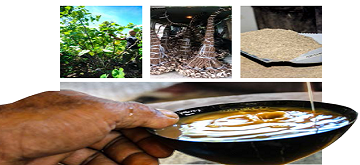3 May 2017
Kava is currently undergoing a renaissance – particularly for kava farmers in Vanuatu, Fiji and other Pacific countries.
The kava industry in Fiji is valued at around FJD66 million (AUD 42m) per year benefitting over 21,000 kava farms. Between 2010 and 2013, kava production in Fiji grew by over 30 percent. In that period, earnings doubled from F$3.8 m to F$7m. In Vanuatu, kava exports grew by almost 40 percent during that period benefitting over 30,000 households.
Kava’s attraction in global markets is familiar territory. Over twenty years ago, Kava was highly demanded as an herbal alternative by international pharmaceutical companies. That demand was eventually beleaguered by health and product safety concerns.
In the last five years, a greater regional effort is being made to improve the quality of kava produced by the Pacific. Last month Fiji, launched its very own Kava Quality Standard and Kava Quality Manual. Developed by the Pacific Horticultural and Agricultural Market Access Program (PHAMA) and Fiji’s Ministry of Agriculture and SPC, the Fiji Kava Manual provides detailed advice covering planting, harvesting and processing. It also outlines the varieties of kava grown around the country. The Kava Standard puts in place the requirements applicable to all kava products used as a food or food ingredient and/or other products intended for human consumption. The documents can be found in the Fiji Agriculture Policy Bank: http://pafpnet.spc.int/policy-bank/countries/fiji or PHAMA website: http://phama.com.au/news/fiji-launches-national-kava-standard/
Last month, EU-APP and PHAMA took twenty representatives from the kava industry; farmers, buyers, extension officers and government officials through the contents of the new Kava Manual and Standards. A number of recommendations were put forward at this Training Workshop. These included:
• Establishment of kava variety demonstration plots and disease; • Planting material distribution nurseries at provincial levels; • Research on performances of the Fiji varieties on different altitudes and agro-climatological zones, responses to mineral fertilizers, viable disease control measures and other research gaps that may be identified; • Preservation in tissue culture (TC) by MOA Research laboratory as back-ups. • Encouraging Agriculture Schools with land to keep demonstration plots for Kava variety collections. Vanuatu has also been busy undertaking similar steps. It has a new kava policy in place http://pafpnet.spc.int/policy-bank/countries/vanuatu and a robust national kava industry taskforce. Extensive research has also been undertaken on the different varieties grown in Vanuatu and biosecurity measures.





CONNECT WITH US